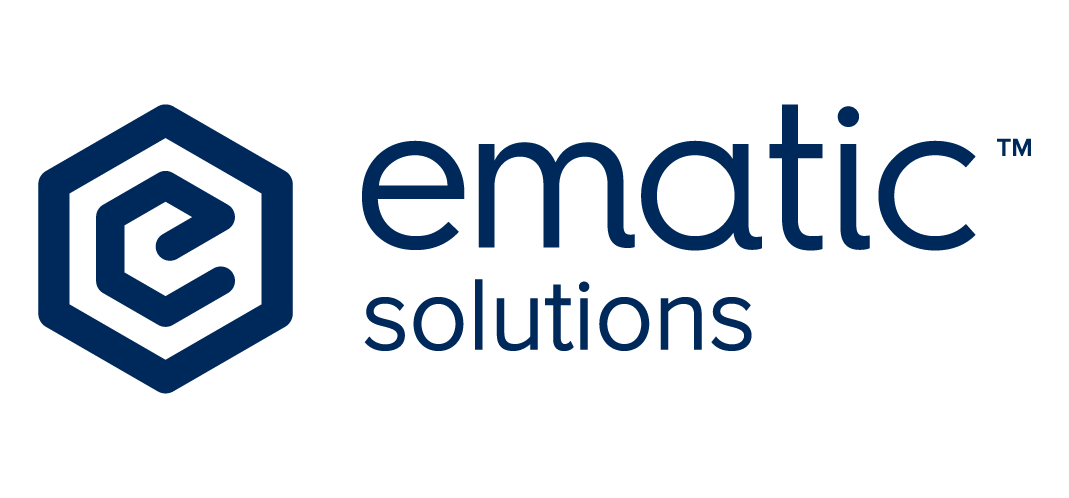9 Inspiring Examples of B2C Marketing Automation

This content is provided by our partner Campaign Monitor. Campaign Monitor is the premium, best in class email marketing and automation tool. Content source: https://www.campaignmonitor.com/blog/email-marketing/9-inspiring-examples-b2c-marketing-automation/ Marketing automation is designed to simplify the email marketing process for your entire digital marketing team. These automated emails are highly effective and have the ability to drive massive revenue and results for businesses, as they achieve 86% higher open rates, produce a 196% increase in click-through rates, and generate 320% more revenue than standard promotional emails. With stats like that, marketers can’t deny the power of marketing automation. What is B2B marketing automation? Marketing automation is the process of software automatically sending campaigns to your customers and prospects based on triggers you define. As opposed to one-off email campaigns that you create and send to a whole list of people, automated emails are set up once and then sent out each time a subscriber meets your pre-defined trigger. What is marketing automation primarily used for? Marketing automation is an excellent and powerful way to engage with your customers, and is particularly useful for marketers who are looking to streamline email campaigns to reach the right subscribers at the right time. What are marketing automation platforms? Marketing automation platforms are the providers of the automation software. These platforms provide marketing teams with various technologies to help them spread their marketing efforts across multiple channels, including email, social media, and websites. What are the benefits of marketing automation? When it comes to marketing automation, there are simply too many benefits to list. However, there are a few that are worth noting: Reduces repetitive tasks: Freeing up the marketing team’s time. Personalization: Making the customers feel as if they’re more than another face in the crowd with unique messaging. List segmentation: Allows you to deliver relevant content to the right readers. Even better, automation has reportedly resulted in 80% ROI, +46% growth, +26% more leads, and more productive marketers. 9 examples of B2C marketing automation 1. Welcome email series Welcome emails are your first chance to make a great impression on subscribers. Using marketing automation, you can create a stellar experience for your subscribers with a one-time welcome email or a series of emails that help onboard them. Broadway.com, the online retailer of tickets for Broadway shows, is a great example. They place a subscribe form at the bottom of their website to capture subscribers, and, when someone completes the form, they send them a welcome email with valuable discounts to incentivize their first purchase. By sending the email immediately after someone subscribes, Broadway.com maximizes opens, clicks, and purchases by presenting the subscriber with discounts while their business is still top of mind. Sending a welcome email like Broadway.com is a simple way to drive revenue back to your business. Check out this next example from Topshop: Right off the bat, Topshop engages their newest subscribers with an immediate offer to get them shopping and offers a small discount. You can also send a series of educational or onboarding emails like Birchbox does. Birchbox first sends a welcome email after subscribers have signed up. Then they follow up the welcome email with an automated series of messages, including beauty tricks, makeup tips, and special offers to keep their subscribers loyal and engaged. 2. Reminder emails Sending a reminder email based on a date is a great opportunity to not only deliver a timely message to your customer, but also keep them buying your products and services over time. Nissan collects relevant information about their customers, including the purchase date of their car. They can then use the purchase date to automatically trigger a reminder email six months after the car was purchased to schedule the first service appointment. Maintenance fees after the car is sold account for a huge portion of Nissan’s overall revenue, so this is an important part of their strategy. 3. Birthday or anniversary Sending your customers, a special offer on their birthday or anniversary is another highly effective strategy to drive revenue while increasing customer happiness at the same time. The first step is to collect your customer’s birthdate and add it to your email list. Many companies, like jewelry retailer Monica Vinader, make this a required field through the online checkout process, while others ask for this information when someone signs up for their email list. Once you have your customer’s birthdate in your email list, you can set up an email to automatically send on his or her birthday. While the leading message should be celebrating your customer’s birthday, this email is an excellent opportunity to generate revenue, so try including a special birthday discount to encourage recipients to make a purchase. You could also use this to recognize the birthday or anniversary of someone signing up for your product, making their first purchase, or other user or company milestones. Check out this example from Birchbox: 4. VIP It’s simple to set up a series of automated emails that can make your VIP customers feel special and keeps them engaged and spending. Sephora does an excellent job with their VIB (Very Important Beauty) Program, which offers early access to new products and special promotions for customers who spend a certain amount of money. Once someone spends the required amount, they’re entered into the VIB segment of the email list and automatically receive an email introducing them to the VIB program. This email welcomes them to the program and provides an exclusive VIB-only offer that encourages them to make additional purchases. You can do something similar using data you have to trigger a customer journey based on someone entering a VIP segment. We even provide pre-built segments for this purpose. Check out this engaging example from Converse that similarly welcomes their VIPs and offers a discount: 5. Re-engagement You can encourage email subscribers who haven’t purchased in a while with an email-exclusive offer, “Save on your next order” discount, or abandoned cart deal like Nau does in the
A Look Back at the Best Emails from 2021

In the past year, there have been some heavy-hitters in terms of effective email campaigns and we wanted to give credit by highlighting some of the best emails from 2021.
Top 5 Martech Trendova za 2022. godinu
Kako se digitalna transformacija ubrzava, mnogo kompanija sada vidi marketinške alate kao osnovnu investiciju. U 2021. godini, COVID-19 je olakšao rast onlajn prodaje. Pogledajmo kako se u 2022. godini razvija marketinška tehnologija i koji su novi trendovi vrijedni pažnje. Ovdje sumiramo 5 najboljih trendova marketinške tehnologije, kako bismo vam pomogli da sagledate ovo dinamično tržište. #1 Spremite se za budućnost bez kolačića Skoro svaki prodavac zna da dolazi era privatnosti podataka, ali više od tri od pet brendova nije spremno za budućnost bez kolačića, utvrdio je Adobe. Od kolačića treće strane, do nulte! Uprkos tome što je Google produžio postepeno ukidanje kolačića trećih strana do 2023. godine, marketinški lideri imaju ograničeno vrijeme da ponovo razmisle o svojoj marketinškoj strategiji imajući na umu sopstvene podatke (prve strane, nulte strane). Na kraju krajeva, uklanjanje kolačića trećih strana iz Chrome-a (65% globalnog tržišta pretraživača) znači eroziju u pogledu tačnosti ciljanja publike i efikasnosti reklamnih kampanja (ROAS). Potreba za centralizovanje podataka Rješenje bez kolačića uključuje podatke prve/nulte strane, korisničke kohorte, kontekstualne i više vođene ansamblima vještačke inteligencije za razumijevanje i interakciju sa publikom. Podaci prve strane su podaci za koje vaši klijenti daju saglasnost da ih prikupljate, kao što su ponašanje na veb-sajtu, e-pošta, telefon itd. Podaci nulte strane su podaci koje vaši klijenti namjerno dijele sa vama – podaci koje prikupljate iz ankete klijenata, kviza itd. Podaci prve i nulte strane dolaze direktno od vašeg klijenta i u vašem su vlasništvu. Uprkos tome što marketing usredsređen na kupca nije nov koncept, on postaje neprimjetan u eri bez kolačića. Potreba za korišćenjem centralizovane platforme podataka o kupcima (CDP – Customer Data Platform) za pojednostavljenje prikupljanja podataka, izgradnju jedinstvenog pogleda na klijente i povezivanje podataka sa više kanala se stoga brzo javlja. U zapadnim zemljama, CDP je široko prihvaćen. Oko 50% preduzeća je ili usvojilo ili usvaja CDP rješenje. U Aziji je napredak počeo sporije. Međutim, kako postoji masovna migracija potrošača sa offline na online prodaju, potražnja za integracijom podataka o klijentima brzo raste pod uticajem COVID-19. U 2022. godini očekujemo da ćemo vidjeti značajno usvajanje CDP-a. Savjet Ematic-a: Pravac je jasan, ali staza-trnovita. Problem sa kojim se mnogi brendovi danas suočavaju zaista nije tehnička integracija, već nedostatak plana podataka. Zapamtite, jednostavno hostovanje podataka vam neće pomoći da riješite ništa dok ne počnete da ih koristite. Ako sveobuhvatna „strategija podataka prve strane“ zvuči previše zastrašujuće, uvijek možete da počnete da “ispitate teren” tako što ćete mapirati svoja ključna putovanja korisnika u uske slučajeve korišćenja i orkestrirati međukanalnu komunikaciju. #2 Personalizacija osvaja tržište Želite staviti prikupljanje podataka prve/nulte strane u svoj plan marketinške igre, ali da biste to uradili, prvo vam je potrebna dozvola vaših klijenata. Vaš uspjeh u marketingu zasnovanom na saglasnosti je izgrađen na čvrstim temeljima povjerenja. Kupci bi bili mnogo spremniji da podijele podatke sa vama kada bi znali za koju vrijednost razmjenjuju svoje podatke. Sjećate li se kada ste pristali da podijelite sa Netflix-om tri emisije koje vam se dopadaju za personalizovanu preporuku? Ako jeste, onda znate tačno o čemu govorimo. Personalizacija počinje da se podrazumijeva Nije tajna da personalizaciju morate imati. Prema Accenture-u, 91% potrošača danas kaže da je veća vjerovatnoća da će kupovati sa brendovima koji pružaju ponude i preporuke koje su im relevantne. Dok 85% preduzeća vjeruje da pružaju donekle personalizovano iskustvo klijentima, samo 60% korisnika je saglasno sa tim (Twilio Segment, Izveštaj o stanju personalizacije 2021.) Očigledno je da postoji jaz između onoga šta kompanije isporučuju i onoga što klijenti zaista žele. Važno je dati sve od sebe Prije svega, personalizacija se odnosi na putovanja, a ne na sesije. Uprkos tome što brendovi posjeduju više kanala za komunikaciju sa kupcima ovih dana, oni se često vode u silosu. Kao rezultat toga, slične marketinške poruke kroz različite kanale stižu do korisnika bez orkestracije, što često dovodi do dosadne prekomjerne komunikacije. S druge strane, dok 70% marketara primenjuje personalizaciju na e-poštu, samo oko 20% koristi personalizaciju na drugim kanalima. Kao rezultat toga, cjelokupno korisničko iskustvo ostaje fragmentovano. Drugo, personalizacija treba da se uradi u velikom obimu. Ručna segmentacija zasnovana na pravilima radi pružanja personalizovanog iskustva može da uradi samo ograničen broj stvari. Ponašanje potrošača je izuzetno komplikovano i nelinearno – oni mogu da pretražuju nekoliko različitih stvari na više uređaja, da uđu u nešto i ubrzo ih privuče drugi prozor. Jednostavni uslovi ih ne mogu dobro predstaviti, s druge strane mnogo uslova je nepotrebno pretjerivanje. Zbog toga se većina personalizacije obavlja u malom obimu. Srećom, vještačka inteligencija se može koristiti za ublažavanje takvih problema i ostvarivanje stvarne personalizacije 1:1, sa svojom sposobnošću da brzo razumije stvarnu namjeru kupaca, predvidi akcije i pruži preporuke u realnom vremenu. Sa potrebom da se pruži bolje personalizovano iskustvo, imperativ je za marketinške stručnjake da zadrže višekanalnu orkestraciju zasnovanu na putovanjima korisnika i predviđanjima podržanim vještačkom inteligencijom. #3 U centru pažnje: E-POŠTA, CHAT BOTOVI I NJIHOVI TRENDOVI Među svim marketinškim kanalima, e-pošta i chat botovi su centar pažnje u 2022. godini. E-pošta se vraća u velikom stilu Mislite da je e-pošta zastarjela? Pa, razmislite ponovo! Više od 78% prodavača je reklo da su primjetili povećanje angažovanja e-pošte u poslednjih 12 meseci. Pored toga, e-pošta i dalje deluje kao jedan od marketinških kanala sa najvećim povratom ulaganja, prema istraživanju Hubspot-a. Pored pristojnih performansi u podsticanju angažovanja i konverzije, adrese e-pošte se koriste kao uobičajeni identifikator korisnika koji povezuje druge podatke prve strane. Nije ni čudo što se e-pošta snažno vratila posljednjih godina. Na društvenim medijima videli smo trgovce koji aktivno pokušavaju uvesti nove formate kako bi iskoristili svoju kreativnost. U e-pošti, nema izuzetka. Sve više brendova počinje da uključuje interaktivni sadržaj kako bi podstakao angažovanje. Neki primjeri uključuju British Airways, koji koriste tajmer za odbrojavanje da podsjeti kupce na vrijeme koje je preostalo do prodaje; Amazon-ov modul direktnog ocjenjivanja u e-pošti za primanje povratnih informacija ili gifova, obrazaca, videa, vrteške sa slikama ili čak kartice za grebanje. Interaktivni sadržaj je dokazano privlačniji, ali ga mnogi trgovci zanemaruju. Više od 91% potrošača želi interaktivni sadržaj, ali samo 17% prodavača ga nudi, rekao je Litmus. Mnogi provajderi e-pošte
Mixpanel: Moćan, samouslužni alat za analitiku proizvoda koji vam pomaže pri konverzijama, angažmanu i zadržavanju više korisnika

Da li transformišete svoj biznis preko podataka? Mixpanel vam može pomoći da dobijete uvid u svaki korak vašeg klijenta kako biste znali tačno kako koriste vaše proizvode. Ova alatka za analitiku proizvoda pruža sjajne mogućnosti za raščlanjivanje podataka vašeg proizvoda, od zadržavanja i angažmana do tokova i grupa. Mixpanel je vodeća web i mobilna platforma za analitiku koju koristi preko 6000 korisnika kako bi razumjeli bolje svoje korisnike i samim tim napravili bolje proizvode. Korištenjem Mixpanel-a možete naučiti o “ponašanju” svog proizvoda – šta motiviše korisnike da završe određenu radnju? Gdje opada protok? Štaviše, sa Mixpanel-om možete otključati akcione uvide bazirane na radnjama u realnom vremenu, odakle možete vidjeti i trendove kompletnog proizvoda. Pored Mixpanel-a, na tržištu je trenutno dostupno još moćnih platformi kao što je, recimo, Amplitude. Obje platforme su moćne, samouslužne analitičke alatke koje daju veliki uvid u informacije o vašim korisnicima. Mixpanel je dizajniran za srednje tržište, dok je Amplitude korišten za veća tržišta. Mixpanel nudi dva različita tipa naplate u zavisnosti od ciljeva vaše kompanije. Naplata se vrši po principu “Mjesečno Praćeni Korisnici” (MTU – Monthly Tracked Users) ili na pricipu “događaja” (event-based). Povrh svega toga, Mixpanel ima mnoštvo dodataka koji će biti koristi vašem timu na različite načine: Interaktivni izvještaji: uz samo nekoliko klikova, možete iščitati vaše podatke i dobiti vizualizaciju za nekoliko sekundi. Ovo olakšava odgovor na pitanje o tome kako je vaš proizvod korišten, koji korisnik ostaje i dalje korisnik i još mnogo toga. Timske kontrolne table i upozorenja: sumirajte kako stavke koje šaljete utiču na cifre koje su važne i pratite tzv. “KPI” vašeg proizvoda na jednom mjestu. Neograničene segmentacije: bilo koja analiza može biti raščlanjena na bilo koju radnju ili properti korisnika, kao što je operativni sistem ili lokacija. Grupna analitika: izračunajte mjere kao što su korištenje proizvoda, aktivna upotreba i zadržavanje na nivou naloga ili kompanije. Integracije podataka: postavi i pojednostavi pretraživanje proizvoda i korisničke aktivnosti bez potrebe korištenja SQL-a. Upravljanje podacima: definiši, upravljaj i transformiši svoje podatke sa lakoćom na način da ih možete pouzdano analizirati. Sigurnost i privatnost: Poštovanjem međunarodnih propisa o podacima kao što su GDPR, CCPA, HIPAA i drugi, vaše informacije će ostati povjerljive i bezbjedne. Skalabilna infrastruktura: analizirajte svoje neobrađene podatke toka korisničkih događaja u velikoj mjeri, bez potrebe za prethodnim proračunom. Ako želite da naučite više o Mixpanel-u, Ematic vam može pomoći i organozovati demonstraciju platforme i garantovati da ćete dobiti najpogodniji ugovor. Dalje, ukoliko je potrebna dodatna asistencija, naša kompanija nudi usluge implementacije i konsultacije kako biste zasigurno znali da je platforma ispravno podešena i prilagođena vašim potrebama. Kontaktirajte s nama kao biste saznali više!
5 Martech trends you need to know for 2022
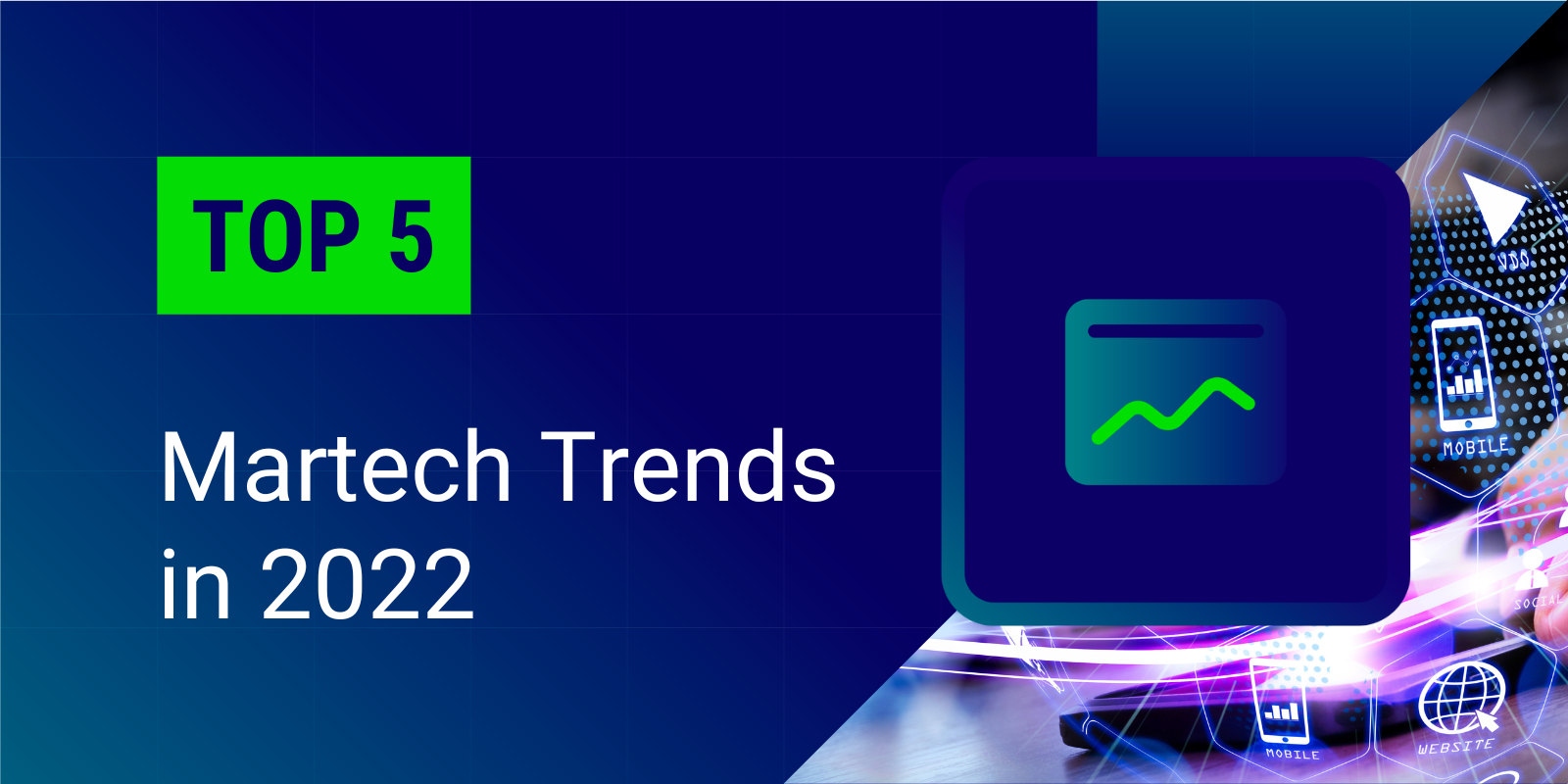
As digital transformation accelerates, many businesses now see marketing tools as a fundamental investment. In 2021, the COVID-19 has facilitated the growth of online sales. Looking forward to 2022, how would marketing technology evolve, and what are some new trends worthy of attention? Here we summarize the top 5 marketing technology trends, to help you navigate through the dynamic market landscape. #1 Get ready to the cookie-less future Almost every marketer knows the era of data privacy is coming, yet more than three in five brands are not ready for a cookie-less future, found Adobe. From third party data to first- , zero- party data Despite Google extending the third-party cookie phase-out to 2023, marketing leaders have limited time to rethink their marketing strategy with owned data (first-party, zero-party) in mind. After all, the removal of third-party cookies from Chrome (65% of the global browser market) means significant erosion on the accuracy of audience targeting and effectiveness of advertising campaigns (ROAS). The need to centralise customer data in one place A future-proof cookie-less solution involves first- / zero- party data , user cohorts, contextual and more AI-driven ensembles to understand and interact with audiences. First party data is the data your customers give consent for you to collect, like website behaviour, email, phone etc. Zero-party data is data that your customers intentionally share with you – think of the data you collect from the customer survey, quiz etc. Both first- and zero- party data come directly from your customer and are owned by you. Despite customer-centric marketing being no new concept, it becomes unignorable in the cookie-less era. The need of using a centralized customer data platform (CDP) to streamline data collection, build a single view of customers and connect data to multiple channels thus arises fast. In western countries, CDP has been widely adopted. Around 50% of businesses either have adopted or are adopting a CDP solution. In Asia, the progress started slower. However, as the massive consumer migration from offline to line, the demand of customer data integration grows rapidly under COVID-19. In 2022, we expect to see a significant uptake of CDP adoption. Advice from Ematic The direction is clear, but the path is murky. The problem a lot of brands are facing nowadays is indeed not the technical integration, but the lack of a data plan. Remember, simply hosting data will not help you solve anything until you start using it. If a full-blown “first-party data strategy” sounds too daunting, you can always start testing the water with mapping your key user journeys into narrow use cases and orchestrating cross-channel communication. #2 Personalization continues to conquer the market Now you want to put first-party/ zero-party data collection in your marketing game plan, but to do so you first need permission from your customers. Your success in consent-based marketing is built on a solid foundation of trust. Relationships are bilateral. Customers would be much more willing to share data with you when they know what value they exchange their data for. Remember when you agreed to share with Netflix three shows you like for a personalised recommendation? If so, then you know exactly what we are talking about here. Personalization becomes “Basic Expectation” It is no secret that personalization is no longer a good-to-have but a must-have. According to Accenture, 91% of consumers today say they are more likely to shop with brands that provide offers and recommendations that are relevant to them.. While 85% of businesses believe they provide a somewhat personalized experience to customers, only 60% of consumers agree with that (Twilio Segment, The State of Personalization 2021 Report) Obviously, there is a gap between what companies deliver and what customers really want. But where does it lie? Just doing as you already do is not enough, you need to do BETTER Firstly, personalization is about journeys, not sessions. Despite that brands own multiple channels to communicate with customers these days, these are often run in silo. As a result, similar marketing messages through the different channels reach the customer without orchestration, oftentimes resulting in annoying over-communication. On the other hand, while 70% marketers apply personalization on email, only around 20% use personalization in other channels. As a result, overall user experience remains fragmented. Secondly, personalization needs to be done at scale. Manual rule-based segmentation to deliver personalized experience only goes so far. Consumer behavior is extremely complicated and non-linear – they can browse several different things across several devices, get into something and soon be attracted by the other. Simple conditional rules cannot describe them well, but setting up a lot of rules is also overkill. That’s why most of the personalization is done on a small scale. Luckily, AI can be used to alleviate such problems and realize real 1:1 personalization, with its capability to quickly understand the real intent of customers, predict actions and provide real-time recommendations. With the necessity to deliver better personalized experience, it is imperative for marketers to keep multi-channel orchestration based on user journeys and AI-supported predictions at the core. #3 Channel spotlight: Emails, chatbots and their trends Among all the marketing channels, emails and chatbots are in the spotlight of 2022. Email is back (and cooler!) Thought email is outdated? Well, think again. 78% of marketers said they’ve seen an increase in email engagement over the last 12 months. In addition, Email still performs as one of the highest ROI marketing channels, according to a survey by Hubspot. Aside from its decent performance in driving engagement and conversion, email addresses are used as a common user identifier that connects other first-party data. No wonder email has made a strong comeback in recent years. On social media, we’ve seen marketers actively trying new formats to wield their creativity. In email, there’s no exception. More and more brands start to include interactive content to drive engagement. Some examples include British Airways, who use a countdown timer to remind customers of the time left in the sale; Amazon’s direct rating
Mixpanel: A product analytics to convert, engage, and retain more users

About Mixpanel Are you transforming your business with data? Mixpanel can help you gain insight into every step of a customer’s journey to see exactly how they’re using your product. This product analytics solution provides unparalleled tools to slice and dice the data on your product, from retention and engagement to funnels and cohorts. It is the leading web and mobile analytics platform used by over 6,000 customers to understand your users better and build better products. Using Mixpanel, you can learn about your product’s behavior: what motivates users to complete a specific event? Where does traffic drop off? Moreover, with Mixpanel, you can unlock actionable insights based on events in real-time. From there, you can see the trends across your entire product. Mixpanel Features Besides Mixpanel, some powerful platforms are available in the market right now, such as Amplitude. Both platforms are powerful, self-serve analytics tools that give deep insights into your customers. Mixpanel is designed for a mid-market segment, while Amplitude is suitable for a high-market segment. Mixpanel offers two different tiers of pricing depending on your company’s goals. You’ll be charged based on a Monthly Tracked User (MTU) or event-based. On top of that, Mixpanel has a variety of features that will be helpful to your team in different ways: Interactive Reports: With a few clicks, you can query your data and get visualizations in seconds. This makes it simple to answer inquiries about how your product is being used, who stays, and much more. Team Dashboards & Alerts: Summarize how the items you send affect the figures that matter, and track all of your product’s KPIs in one spot. Limitless Segmentation: Any form of analysis can be broken down by any event or user property, such as operating system or location. Group Analytics: Calculate measures such as product uptake, active usage, and retention at the account or company level. Data Integrations: Set up and simplify the exploration of product and user activity data without the need for SQL. Data Management: Define, manage, and transform your data with ease so that you can confidently analyze it. Security & Privacy: By adhering to international data regulations such as GDPR, CCPA, HIPAA, and others, your information will remain confidential and secure. Scalable Infrastructure: Analyze your raw user event stream data at scale, with no pre-computation required. How Ematic Can Help If you’d like to learn more about Mixpanel, Ematic can assist you to set up a demo and guarantee you’re receiving the best deal. Furthermore, if additional assistance is required, we provide implementation services and consultancy to ensure a seamless onboarding and maximum adoption of the solution. To find out more, please contact us!
Future-proof your customer data infrastructure

Now more than ever, customers expect personalized, integrated, and frictionless digital experiences – and it’s rapidly changing how businesses build and adapt their customer data infrastructure. Therefore it’s no surprise that businesses are demanding solutions that provide more flexibility, visibility, and control over how they collect and integrate their customer data. Achieve your goals today and adapt for the future We’ve discussed the shift in how businesses adopt and deploy software, moving away from the “build or buy” mentality to a combined model of implementing customizable infrastructure “building blocks” that allow for adaptability. Businesses are also becoming increasingly aware that flexibility is crucial to future-proofing their data integration strategy, ensuring sustainable data infrastruture and meeting the needs of customers in this evolving landscape. Whether you choose to build, buy, or some combination of the two, a future-proof data infrastructure will meet your company’s needs today and offer the flexibility to adapt for the future. That’s why trends like composability are gaining so much momentum. Composability allows for extensibility and the customization of out-of-the-box features that enable new business scenarios and use cases. According to Gartner, 60% of organizations will seek composability in new application investments by 2023 because monolithic application experiences no longer meet the requirements for continuous business agility. How Twilio Segment tackles composability Understanding the importance of composability, Twilio Segment introduced “Destination Actions” – a new framework for building, enabling, and configuring destinations on their platform that allows adapting to any use case with composable customer data integrations. The destination actions feature: Easier setup – Destination Actions eliminates the majority of required settings in the destination setup process by moving hardcoded mappings from code to UI-based configuration. Increased transparency – Each partner destination and associated product capability is exposed in a well-defined schema that is visible directly in the Twilio Segment UI. Customizability – All settings are made modifiable at both the field level and endpoint level. For example, a user could re-wire a track call to update a user profile in a destination. Customizability without sacrificing usability Customer data platforms like Twilio Segment are used across the business by a wide variety of teams, from Engineers and Developers, to Marketers, Product Managers, Data Analysts, and more. These teams work tirelessly to meet the diverse needs of your customers…shouldn’t your CDP do the same? Destination Actions offers the customizability that developers expect without requiring as much code, so less-technical teams can extend their customer data integrations however makes the most sense for them. Let’s take a look at an example… A travel booking company, Fly Inc. wants to use Braze to send targeted emails for their holiday traveler campaign, but the standard configuration doesn’t quite fit its use case. With Braze’s Actions-based destination, only a few settings are required to get data flowing. Once the user reaches the Mappings screen, they have full transparency and flexibility into how their data is delivered. In this standard configuration, we’re sending events, purchases, and customer traits to Braze, using three different Actions. Fly Inc.’s main purchase event is Trip Booked, but our Braze classic destination registers purchases as Order Completed. By using the new Braze Actions-based destination, they can easily edit this trigger to fit its use case. What if the campaign requires more personalized targeting? Let’s say, for instance, Fly Inc. wants to include people who visit their pricing page, but supporting page calls is not a Braze best practice out-of-the-box. With Braze Actions, the user can add another instance of the Event Action, but this time, trigger the event when the pricing page is viewed. Next, they can edit the mappings to get an event in Braze called Viewed Pricing. This is just one of the many ways that Destination Actions can be used to customize how data is sent to downstream destinations using Twilio Segment. Available Actions-based Destinations on Segment Segment focuses on adding more action-based destinations as the core competency. There are 5 action-based destinations integrated seamlessly with Segment, including Amplitude: event tracking and segmentation platform for web and mobile apps Braze: engagement platform that delivers omni-channel messaging experiences Customer.IO: automated messaging platform to craft and send emails, push notifications and SMS messages Full Story: Event tracking and segmentation platform for web and mobile apps Slack: Team communication and collaboration platform that offers IRC-style features like chat room and direct messaging And 4 more in Segment’s public beta: Google Enhanced Conversions Facebook Conversions API TikTok Conversions Google Analytics 4 Interested in Segment’s CDP? This content is provided by our partner Twilio Segment. Segment is a market leading customer data platform (CDP) by the silicon valley unicorn Twilio, which helps you unify your customer data for all sources and create a single view of the customers. Content source: https://segment.com/blog/introducing-destination-actions/
Adjust: Vodeća alatka mjerenja i zaštite od malverzacija za mobilni marketing
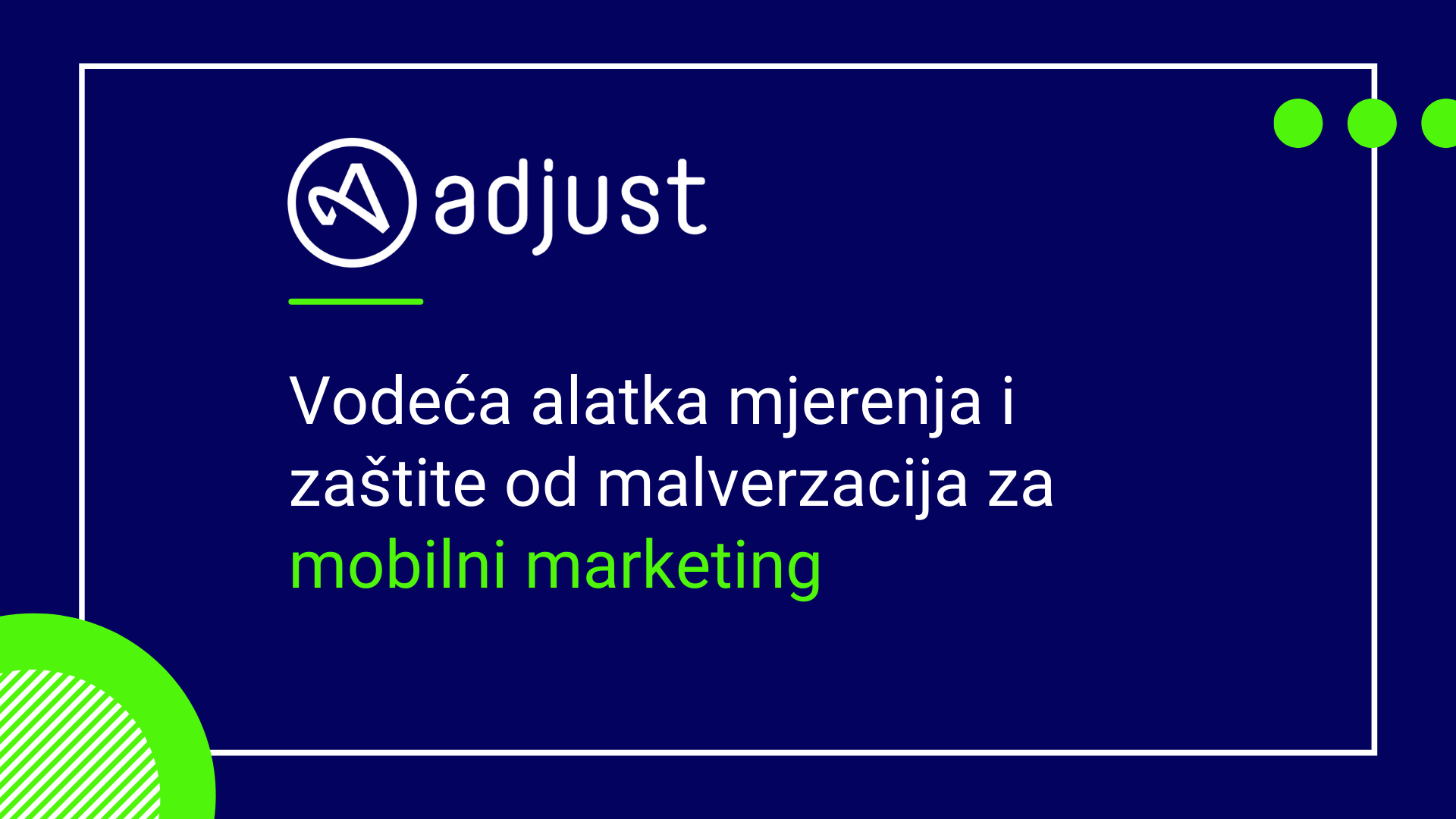
Ako tražite način da izmjerite performanse vaših marketinških kampanja ili želite analizirati “journey”-je vaših korisnika, te njihovo ponašanje unutar mobilne aplikacije – onda ste našli pravu stvar – Adjust. Nudi vam pregršt alata za bolji, lakši i pametniji marketing, a čini sve mnogo sigurnijim. Adjust koriste neki od vodećih svjetskih brendova, uključujući Spotify, Soundcloud i Booking.com. Adjust vam pomaže da pratite performans kampanja u stvarnom vremenu i na taj način optimizuje i prilagođava marketinšku strategiju vašim potrebama. Međutim, šta je to tačno Adjust i zašto je toliko bitan? Da biste napravili stvarno korisnu aplikaciju morate imati solidan model atribucije koji vam pruža dokaze o efektivnosti širom marketinškiih kanala. Jedan od najvećih izazova marketara je tačan uvid u protok novca od oglasa – te koje strategije zapravo donose profit, a koje ne. Mobilna atribucija vam može pomoći da odgovorite na sljedeća pitanja: Koji marketinški kanali imaju najbolji performans? Koliko kupovina dolazi od određenih marketinških kampanja? Koje marketinške kampanje su najefektnije u stvaranju konverzija? Postoje li problemi sa korisničkim “journey”-ima sa kojima se treba pozabaviti? Kad se naoružate ovim podacima, moći ćete bolje razumjeti koje marketinški kanali donose najviše preuzimanja, aktivnih korisnika i u na kraju zarade. Mobilna atribucija mijenja način na koji marketari prilaze poslu – vrijeme je da unaprijedite svoj marketing. Postoji mnoštvo načina da prikupite ove informacije, uključujući Adjust, Branch i AppsFlyer. Branch i AppsFlyer koriste vrlo napredne opcije, dok je potonja opcija poznata po jednostavnosti korištenja. Što se tiče Branch-a, oni se više fokusiraju na “deep-linking” te su privljačniji “enterprise” klijentima. Appsflyer i Adjust su, s druge strane, idealni za srednja preduzeća. Ako tražite pristupačno rješenje sa lakoćom uspostavljanja i korištenja, Adjust je savršen izbor. Ne samo da je pristupačan, već sadrži dosta opcija koje možete naći u dosta skupljim alternativama: Atribucija: pratite vaše korisnike i njihov “journey”, te njihova ponašanja Sprečavanje malverzacija: Otkrijte i spriječite malverzacijske aktivnosti u realnom vremenu, tako da ste sigurni da je vaš novac utrošen na najbolji mogući način Analitika: Sastavite kompletnu sliku interakcije vaših korisnika, svojih marketinških napora i performansi kampanja ePrivacy sertifikat i GDPR saglasnost: Puna zaštita i sigurnost vaših privatnih podataka. Kontrolni centar: prilagodite i automatizujte vaše kampanje, tako da skalirate mobilni marketing do punog potencijala, maksimizujete svoj povrat uloćenog novca – ROI i nastavite ulagati u metode koje funkcionišu Softver otvorenog koda: besplatan za analizu i izmjenu, a integracija jednostavna kao “copy/paste” metod Veći obim publike: Povećajte prihode uz segmentovanje publike Korištenjem aplikacije za mobilne atribucije poput Adjust pruža vam ptičiju perspektivu podataka – jedinstvenu platformu za detaljnu analizu. Adjust takođe omogućava da kupujete sigurnim putem, te štiti od malverzacija, dok su vaši podaci čisti i sigurni. Ako tražite razumljivo rješenje, Adjust je savršen za vas. Uz nas ćete dobiti ponudu koju je teško pronaći na drugom mjestu. Uz sve to, možemo vam pomoći da se snađete na početku korištenja, tako što ćemo organizovati tim da pomogne sa implementacijom. Od uspostavljanja početnog naloga do treninga platforme, osiguraćemo da je sve podešeno kako treba.
Adjust: The leading mobile measurement and fraud prevention for mobile marketing
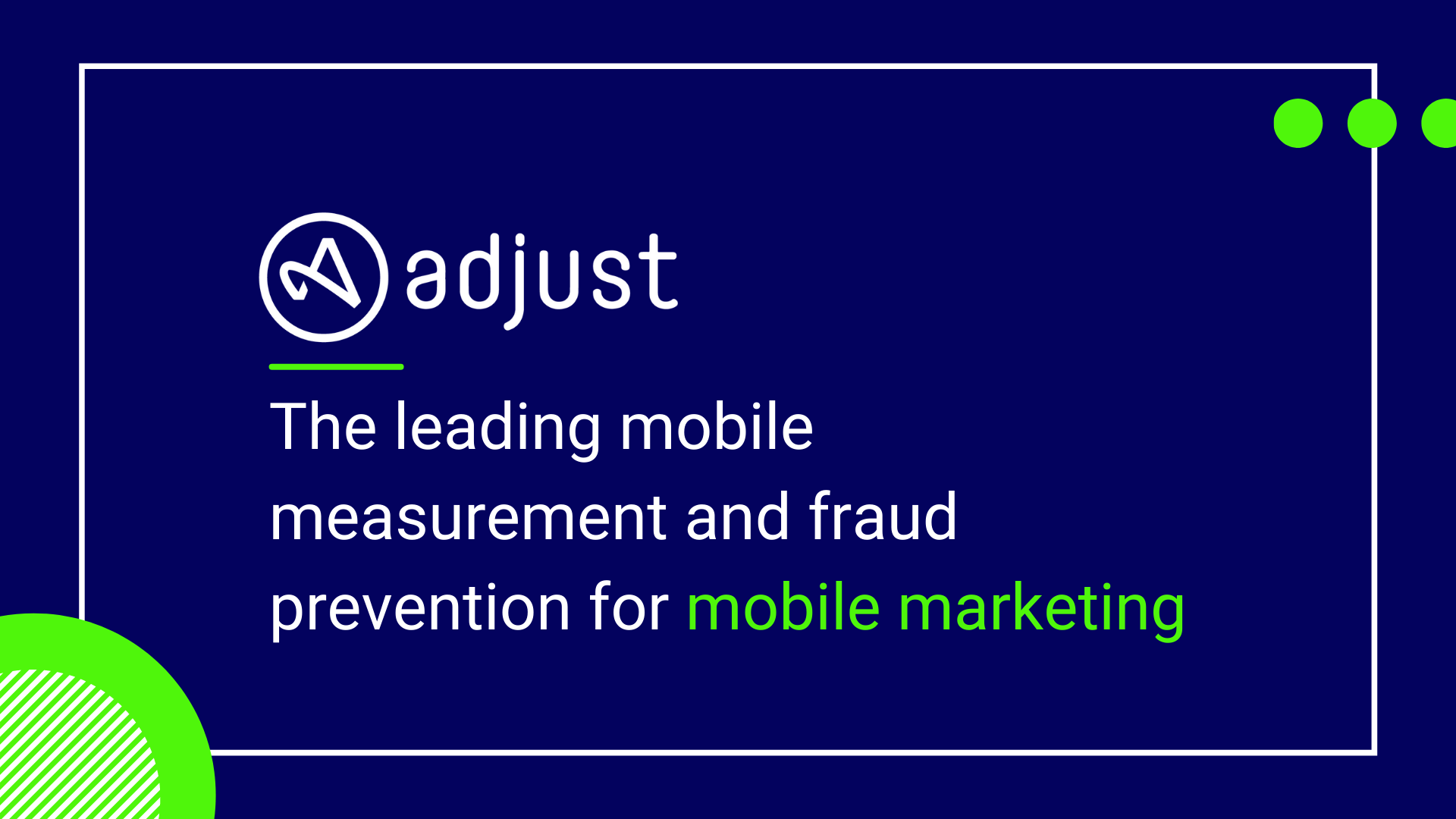
If you’re looking for a way to measure your marketing campaign performance or to analyze the users’ journey and behavior inside your apps, look no further than Adjust. It offers a suite of tools to make your marketing simpler, smarter, and more secure. Adjust is used by some of the world’s leading brands, including Spotify, Soundcloud, and Booking.com. Adjust helps you to track the performance of your campaigns in real-time, making it easy to optimize and adjust your strategies as needed. But what exactly is Adjust, and why is it so important? To create a truly successful mobile app, you need to have a solid attribution model in place that allows you to track and prove the effectiveness of your marketing across channels. One of the biggest challenges that marketers face nowadays is gaining accurate insight into exactly where their ad dollars are going — and what’s working and what’s not. Mobile attribution can help you to answer these key questions: Which marketing channels are performing the best? How many leads or sales came from a particular marketing campaign? Which marketing campaigns are most effective at driving conversions? Are there any problems with the customer journey that need to be addressed? Once armed with this data, you can better understand which marketing channels are most effective in driving downloads, active users, and ultimately revenue. Mobile attribution is changing the way marketers approach their business – so it’s time to scale up your marketing efforts. There are a number of mobile attribution providers currently on the market, including Adjust, Branch, and AppsFlyer. Branch and AppsFlyer both offer highly competitive features, with the latter being known for its simplicity of use. For Branch, they are focusing on deep-linking and caters to Enterprise. Appsflyer and Adjust, on the other hand, are ideal for the mid-market. Moreover, if you’re looking for a more affordable solution with an easy to set up and manage, Adjust is the perfect choice for you. Adjust charged only for a non-organic install while other solutions such as AppsFlyer charged for both organic and non-organic installs. It’s not just affordable—it also has a lot of features that you would find in more expensive solutions to measure, automate, and protect your marketing campaigns: Attribution: Track your users’ journey and/or behavior from a single source across multiple marketing channels while measuring engagement, installs, in-app actions, and other key performance indicators (KPIs). Fraud prevention: Detect and prevent fraudulent activity in real-time, so you can be sure that your marketing dollars are being spent in the most effective way possible. Analytics: Get a complete picture of your users’ interactions, marketing efforts, and campaign performance. ePrivacy Certified & GDPR Compliant: Full protection and security covering your personal data. Control Center: Adjust and automate your campaign optimization so you can scale your mobile marketing more quickly, maximize your app ROI, and continue to invest in what’s working. Open-source software: Free access to analyze, alter, and improve the code and integrate it with as simple as copy-paste. Audience Builder: Increase your top line revenue by building and sharing segmented audiences. Using a mobile app attribution platform like Adjust provides you with a bird’s-eye view of your data – a single, streamlined dashboard that you can use for in-depth analysis. Adjust also gives you the ability to make verified purchases and protect against fraud, ensuring that your data remains clean and reliable. If you’re looking for a comprehensive mobile measurement and fraud prevention solution, Adjust is the perfect solution. You will get an offer that you will not find anywhere else if you purchase from Ematic Solutions. On top of that, we can help you to arrange a demo for your teams and help you to get the most out of the platform. From account setup to platform training, we can help to make sure the solution is being installed correctly and running smoothly.
mParticle: a Customer Data Platform that never stops innovating
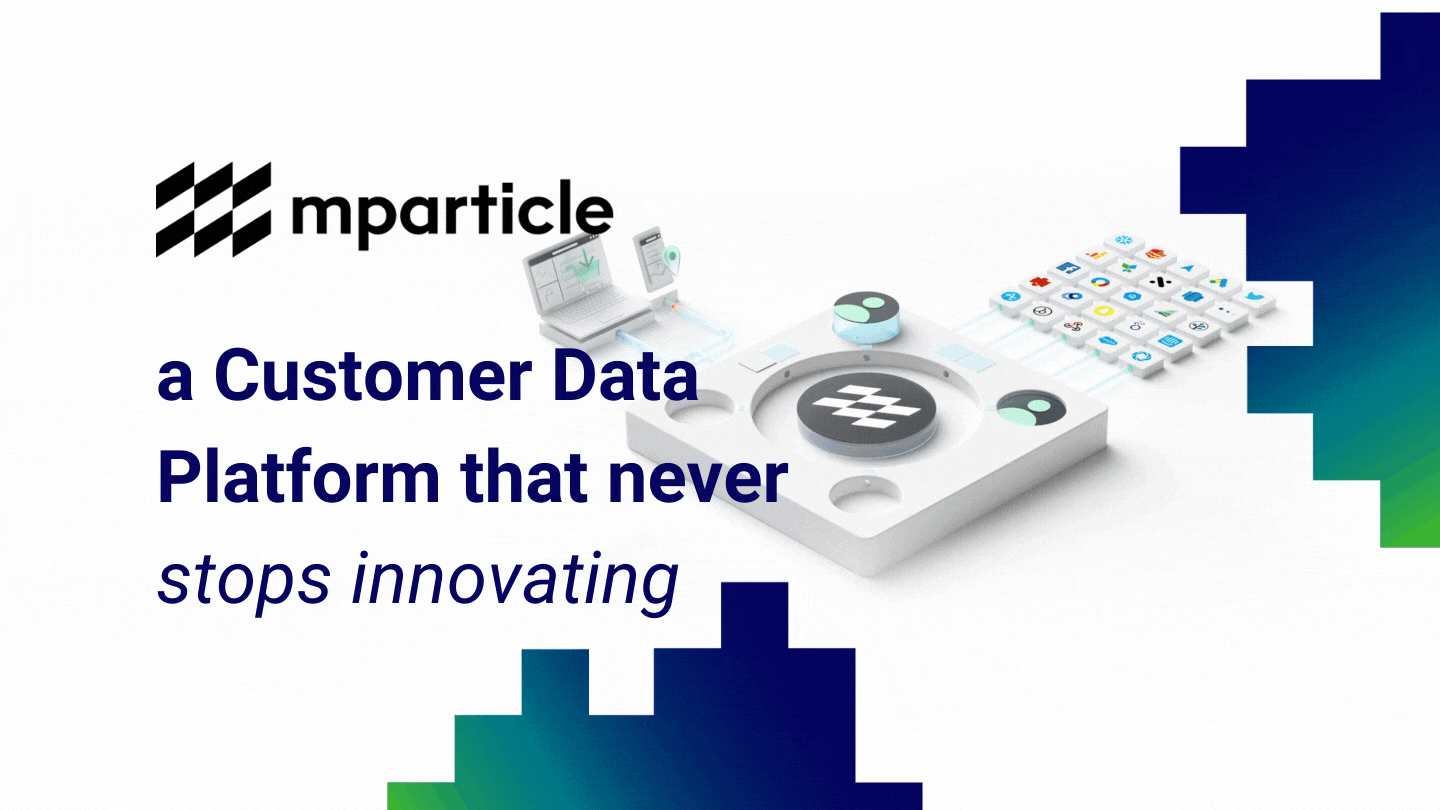
We’ve talked about Segment and Tealium in our recent posts on how both focus on different target segments and components in the Customer Data Platform (CDP) space. Today’s article will be touching on where mParticle fits in the room. Segment and mParticle were born around the same year when the “Customer Data Platform” concept emerged not long after Tealium made the switch. Some people say that Segment and mParticle are nemeses. But, we see that mParticle is much more competitive for Tealium vs. Segment because the products are enterprise-grade and mParticle never stops innovating to improve its products. Similar to Tealium, mParticle also provides solutions for large Enterprises vs. mid-market. mParticle is moderately well-known, used by famous brand names such as Venmo, Spotify, Airbnb, and many more. For a solution that has big brand names supporting them, mParticle is reasonably affordable. Unlike Tealium, mParticle concentrates on data infrastructure and enforces data quality and governance. They let marketers build fully managed, highly available, and secure data infrastructure. mParticle’s Data Connections lets you capture data from all of your platforms and data sources using 12 platform-specific SDKs or Events API and connect to (and from) 300+ marketing tools. Their newly released feature lets you measure video and audio usage metrics and more with one easy-to-setup SDK. They support teams across your organization with always-on Data Quality tools, such as creating a pipeline of consistently clean, accessible data for all stakeholders or merging anonymous and known customer profiles programmatically while maintaining compliance. Their “Smartype” feature also enables engineers to ensure proper event collection at run time with automatic code completion to eliminate incorrect cross-platform instrumentations. Their Data Governance safeguards your customer’s privacy by working with OneTrust to collect and manage compliance and consent across your stack. They meet compliance regulations wherever your company has a presence across the world. They also honor requests from Apple users to opt out of data collection for analytics tracking. Lastly, mParticle lets you extend 275+ event and audience integrations to include 550+ LiveRamp-powered integrations with leading measurement and media partners. Their “Calculated Attributes” feature will continuously update user and event attribute calculations for deeper customer insights that you can use to enrich audiences, drive increased personalization, enhance analytics, and improve speed to market. Segment also highlights their Data Connections/Infrastructure, and Tealium is designed for Enterprise. However, we like mParticle as they are genuinely enterprise-grade and have a well-planned product strategy and wide-ranging roadmap. If you wish to understand more about mParticle and how they can fit in your stack as your data layer, contact Ematic’s buyers’ agent today.
